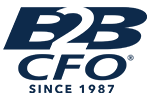
Accounts Receivable Collections for Professional Firms
Posted on July 2, 2020 by Dennis Niven
It is well known that engineers, accountants and other professionals are not well-trained for their careers as they head out of classrooms and into the world. They have simply proven, perhaps, that they have an aptitude to learn their profession in the real world. On the job, they learn a great deal about their trade and can finally become PEs, CPAs, etc. They soon become very skilled in their professions and begin to gravitate towards supervising the completion of easier tasks while challenging themselves with more difficult and, hopefully, exciting work. They feel that they have finally learned the discipline of their chosen profession and find themselves in desirable positions on the staff, with their friends and in their lives. Then something hits them for which they are not prepared, something that schooling didn’t even attempt to teach to them.
One year into my own career, I realized that I learned in school very little that helped me on the job. After getting chewed out for being ignorant, I told the managing partner of the office that I would redouble my efforts and he would soon be proud of me. I buckled down, learned my trade and became one of the youngest in the firm to be promoted to Firm-wide Manager (a curious title). I worked long hours all over the country, saw my family two partial weekends a month, caught the attention of the co-managing partner of the national firm, and attended the National New Partners’ Meeting as heir apparent of the Arizona office after the audit partner became Arizona Auditor General and the managing partner announced plans to retire.
For my new position I was told to stop working in the practice and to start working on the practice. This meant marketing the firm, bringing in new clients, hiring and retaining the best talent, thinking strategically, managing cash flow and meeting new metrics based on these new things for 100% of my pay. I was going to manage a very visible professional services practice, but nothing in school or in my training-to-date prepared me to do it. I realized that what I had learned and done to get me to the pinnacle of an ambitious public accounting career was of very little help to me. My career had changed overnight and my foundation of skills left me shaking.
I submit today that each of you is in some stage of a gradual but distinct career change – from a working CPA/Engineer/YouNameIt Pro-type to manager of a professional firm. I’d like to say that my 14 year stint with a Big-8 accounting firm finally came together as a compilation of the two distinct careers, but it did not and, indeed, could not. Managing a firm is a different profession than doing the firm’s work. I only wish that someone would have trained me in management skills along the way, because I have come to believe over a 47-year career that only with working managers can a firm and its people reach their potential.
As time and interest allows over the coming year, I will at least expose you to many of the management skills that you will need in your careers. After perusing the accounts receivable aging that Jim referred to in his recent email on the subject, the first area I am bringing to you is Best Practices in Accounts Receivable Collections. I know you must be absolutely thrilled at listening to a CPA talk about this sort of thing, but I believe that this is very important to your careers and earnings.
I will begin by backing up a bit and mentioning that AR collection is just part of what is called working capital management. I will sometimes quote from B2B CFO® literature on Working Capital Improvement because I am the author of the material. Working capital for business is often referred to as simply the excess of short-term assets over short-term liabilities. Short-term assets include cash and other assets expected to be turned into cash within one year – marketable securities, accounts receivable, short-term notes receivable, inventory and prepaid expenses. Short-term liabilities include those expected to be paid with cash within one year – accounts payable, short-term debt such as credit lines, the short-term portion of long-term debt and accrued expenses.
In your professional business, the elephant in the room stomping all over its working capital is Accounts Receivable. For example, two-to-three months of sales is a lot of money sitting in Accounts Receivable. The average days of sales outstanding (DSO) in accounts receivable for a survey of 13 civil engineering firms in Arizona is an atrocious 54½ days. Businesses in general should have less than 40 days in accounts receivable, and well managed firms that pay for its product (labor) every 2 weeks should have receivables of less than 30 days. I had an engineering firm client with nearly 80 days DSO at year end.
As professional service companies grow, don’t place enough emphasis on effective billing, and have people without necessary client relationships perhaps becoming a little lazy on collections, working capital disappears quickly. Finding working capital is not well understood by working managers, it becomes very expensive in terms of opportunity cost, and, especially in a recession, is difficult to find. Turning AR into cash efficiently and effectively is a systematic process and part of the management discipline you need to learn.
Best Practices in Accounts Receivable (AR) Collection
Hereafter, I greatly paraphrase an article of mine published as a resource to AR collection professionals by The Accounts Receivable Network. The article was titled: Ten Tips for Billing in a Recession.
The cash-flow crisis resulting from inadequate AR collection practices in a growing business is generally the greatest threat the business will ever face. Even a profitable firm can be forced to close by the resulting cash crunch. What is frustrating is that completely avoidable cash crises occur right under the noses of those best able to avoid them.
If the firm has well-designed policies governing its credit, billing and collections procedures and faithfully follows practices that work, AR will not be a problem. Sensible policy and procedures for are quite effective, and after you decide as individuals to follow them, you will be well on your way towards avoiding a cash crisis in your firm. Included in the policy and procedures will be getting credit applications, assessing rick, approving credit or getting retainers in advance, reserving the right to charge interest on late payments, etc.
In advance of the collection policies and procedures document, here are a few tips that, when taken as seriously as client service, will greatly help your collections efforts:
1) Invoice clients in their own right time. Rather than invoicing all clients at the end of every two week cycle, invoice them at just the right time to get necessary approvals for immediate payment. For example, if a client has to allow one week for approvals before payments are approved at a Council or Board meeting, invoice one week before the Council or Board meeting every time they meet. If they meet twice a month, then invoice twice a month. This requires separate billing dates, and, perhaps, special accounting estimates, for potentially every client, but the cash flow improvement could be substantial. And if a job is complete, invoice it right away, regardless of what the client invoice cycle might be.
2) Deliver invoices electronically. Whether through an electronic network, EDI or email – fax if you have to – but don’t lose the several days it takes an invoice to travel through the mail to its destination. Also, it’s easier to confirm an email address or fax number than get the correct address or PO Box number; companies can have multiple addresses and it’s easier to resend an email than a paper package through the mail. And your client will appreciate any format that saves work on their end and speeds processing.
3) Document charges concurrently. If you have scanned in or copied all the documents related to an invoice, there’s no scrambling when it’s time to send it. Where are the receiving documents? Where are the POs? Billing or project managers should track and scan or copy any documents related to an invoice on a daily basis. Reimbursable expense reports should approved through the system at least weekly, and back up documentation scanned and available in the system, so that reimbursable expense charges are ready to go with the very next invoice. Organized invoices are sent out faster and are easier for accounts payable departments to approve, which makes the money get into your account faster. You want to be the first invoice that company receives in a month, especially if that company is cash-strapped.
4) Delegate invoicing responsibility to the person responsible for the work. The professional staff on the job on a regular basis is in the best position to know the person or persons that must authorize payment, and field the ‘Yeah, but…’ questions that accounts payable clerks are trained to ask. (More on accounts payable contact relationships later.) Those professional relationships are more powerful than office staff or collections agents call for payment and have to go back to project managers to gather documentation, etc. The account or project manager will work to get it out the door.
5) Implement a process for prompt approval. Reviewing manager should have 24 to 48 hours to approve outgoing invoices; if not done, the approval request should be escalated up the chain for immediate approval. Consistently followed, this policy not only ensures timely approvals, but spurs them from the reviewing manager (after one or two escalations).
6) Offer a discount for early payments. Any amount less than one percent might not be worth the effort for payables to get it out early, but most companies are attracted enough by that one percent to take it. However, be prepared for those whom take the discount without making the early payment by offering it only to selected clients.
A dramatic example of this from when I was the CFO for a NYSE manufacturing company, a vendor of ours relocated close to our plant in Nebraska in order to give us just-in-time service. Being one of the most profitable corporations in the U.S. in the 20th Century, we paid bills that had aged about 45 days. When the vendor’s bank notified us to make all payments to the bank’s lockbox, I asked the owners in for a chat. Turns out they had over $2 million if receivables from us and had to finance the growth (and resulting A/R) with 18% bank financing. I advised them that if they offered a 1/2% discount for payment within 10 days, I would take advantage of that and pay more quickly. They did and I did, hand delivering a $2,500,000 check to them the next day, and paid all of their bills the first Friday after receiving the invoice. They vendor was happy, the bank was happy to step aside, and I was happy saving the 1/2% on $20 million annually on their invoices. (Update: I drove through Kearney, NE last year, 32 years after we agreed on the above terms, and that vendor’s modest shop had grown to cover two square blocks.)
7) Before the invoice goes out, call those whom must approve the invoice before the client will pay it. This first call is an intelligence gathering mission as much as it is a quality control step. Verify that the job is going well enough to be approved and discuss any problems. Confirm that the person will be available to approve the invoice, or find out who will approve in the person’s absence. This is the most politically acceptable time to call. You’ll hear some good things, like: ‘We’ve changed our procedure. Make sure you send a copy to AP and the purchasing department or the receiving department, etc. Flush out any objectives right away, rather than allowing problems to surface at the 60 days past due date. You’ll usually be happy that you made this phone call or visit.
8) The forgotten relationship. This one works great! Account or project managers have relationships with client supervisors involved with the project, but they are forgetting someone… the one that unofficially controls the purse strings – the accounts payable (AP) person! You should get to know this person quite well, stopping by regularly when you are in the client’s office. Start off on the right foot by being very nice to this person, then make it your goal to know this person’s spouse’s name, kid’s names and, best of all, pet’s names and hobbies. You will eventually learn this person’s real interests and they will always find the time to talk with you. Remember, to be the company that gets paid, especially when money is tight, means maintaining a relationship with this client’s AP contact.
9) Call again, two days after the invoice was sent. This time call your AP contact. First, ask how the operation on the family pet went, etc. Then make sure your invoice was received in the AP department and not lost on someone’s desk. This second phone call is still a call offering to be helpful.
10) Call a third time the day the payment is due, especially if you have offered an early payment discount. If the company is holding onto their payables because they are having cash flow problems, reinforce your discount terms and suggest they pay discounted invoices only at that time. Even without discounted terms, you will find that this call from you, one of the vendors the AP person enjoys talking to, will help you get moved to the front of the list when there isn’t enough money to pay them all.
Remember that client relationships not only get you paid sooner, they often get the firm in the door to do other follow-up projects. While the squeaky wheel might get the oil, people pay people they know and like. Making a number of phone calls every month to develop relationships with people in the AP departments of your clients is not a lot of work, but is one of the hardest things to do on continuing basis. If you consistently make these calls, you will do a tremendous job reducing your DSO.
In summary. In a tough year (insert current year here), even clients who have paid regularly for years can have cash flow problems. Companies that always paid after 30 days may start to pay at 40, then drag it out to 45 or 50. These small changes that happen as a company starts to have problems require human interventions; they are not solved by automated systems or a call one month too late. Companies with cash flow problems will put off every invoice they can, but those that fit comfortably within the client’s paper flow deadlines, those that are completely documented, and those with better relationships are the ones that get paid. On top of doing good work, all of this is required to be mastered by the today’s working manager

